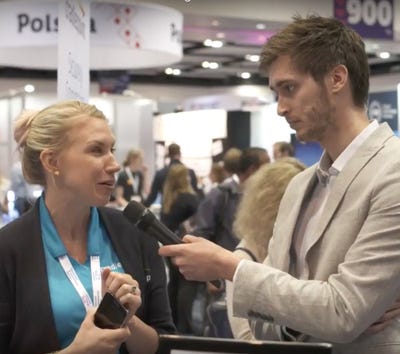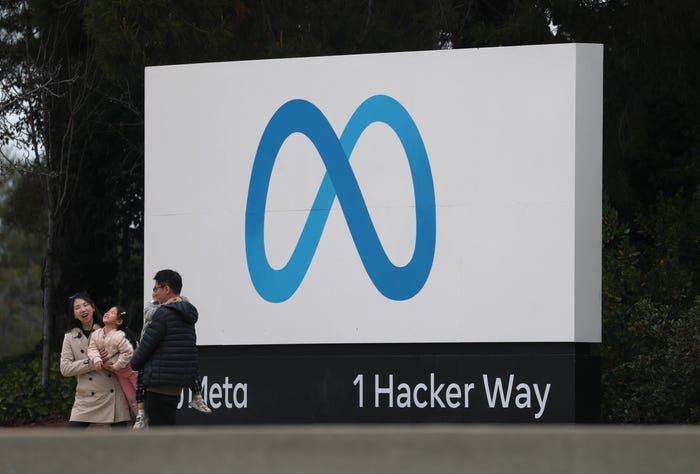Bosch Could Be Eliminating Industrial Mistakes in 2-3 Years via IoTBosch Could Be Eliminating Industrial Mistakes in 2-3 Years via IoT
Industrial internet leader Bosch tells us about the IoT power tool products their working on and how long until these solutions hit the mass market.
May 24, 2017

Bosch is a brand most everyday households are familiar with – particularly anyone who's ever held a drill or attempted DIY. But now more than ever, the company's considerable prestige among consumers is being superseded by its reputation in industrial circles.
This is in no small part thanks to Bosch's work within the industrial internet of things (IIoT) where they provide sensors, cloud services and more. The company is frequently named alongside the likes of Cisco, Dell and IBM as one of the most powerful and important companies in the IoT space.
Last year Bosch CEO Volkmar Denner claimed they “offer all the ace cards for the connected world from a single source”.
Partnering could speed up time to market for IIoT
However in 2017 it's clear that few companies can afford to be an island where IoT is concerned. From the smart home to agriculture, collaboration between would-be competitors is becoming more common as everyone seeks to implement and utilize the next level of mass connectivity across businesses and homes.
Eli Share is head of mobile and IoT for Bosch Power Tools, where he drives strategy, process and “points of entry” relevant to IoT across the entire Power Tools division, which encompasses everything from DIY tools to industrial devices.
“Our user segments are very diverse when we look at IoT solutions; the needs of a 'DIY-er' are very different from those working in, say, construction,” Share explains.
As with most decision makers working in the IoT space, he's in favour of partnering to enhance how far any single connected device can go, and generally push progress in IoT and IIoT forward.
“This might be the first time that Bosch is looking at these industries [manufacturing, construction etc.] as 'open standards'.
“We have a lot of point solutions, but if we don't build them on open standards that other companies can integrate into we're missing the mark because, in this day and age, with these applications, you can't plan on one company owning everything. Because you're customizing solutions, you have to allow people to work within your open standards.
“So Bosch is definitely taking steps in that direction to not only provide the solutions and get some of these early adopters into play, but also allowing others to come into the picture.”
Two to three years until industrial internet hits the mainstream
In four months' time Share will have sat on a panel with Centrica and Leica Microsystems predicting how IoT solutions will improve customer experience and increase process productivity at Internet of Things World Europe in London.
He's adamant that IoT is “the biggest driver” towards the much-acclaimed Industry 4.0 and that Bosch is “primed in to lead the development of consumer and industrial solutions in this area”. This suggests Bosch is well placed to fill the void of comprehensive industrial IoT case studies that currently exists.
“The way I see it is that, especially with IoT and Industry 4.0, we do have some isolated success stories but not a lot of case studies,” Share says.
“Most of this is because a lot of industry is still built upon legacy systems – companies are hesitant to change. Across all of the different facets and functions they'll all agree that's where they need to go, but then you say 'here's what you need to do to get there' and the response is 'well… this requires high investment, there's a high resource cost to implement, and it doesn't necessarily give us the returns we need right away'. So it's tough to justify. A lot of the potential success stories are held back by that.”
Share can allude to several fledgling case studies involving Bosch systems and devices, covering predictive maintenance, manufacturing analytics, enhanced product performance and more. However, the actual scope of application is currently narrow compared to what it will become – unsurprisingly Bosch and other key industry players are waiting to showcase their new products until they can be demonstrated to their full extents.
That said, he's confident Bosch Power Tools has already collected evidence proving that long-term ROI is very achievable with these applications:
“In our power tool manufacturing lines we have some cells that we know are very agile and highly adaptable, based on the data that we're getting in real time,” Share says.
“These studies show a huge impact, but they're currently very narrow applications and the cost to implement is still quite high, so we still need to build out the long-term returns and demonstrate with data that these tools prevent users from making mistakes, and save so much time in rework and quality analysis, and have 'this much' impact on production times.
“This is where I feel the industry is at right now – where we have a lot of point solutions in general, that speak to one niche application, and we need to broaden what those applications look like to really drive value. We need two to three years to build the large-scale case studies and get to the tipping point where people start adopting the best solutions at a quicker rate.”
Eliminating mistakes on the factory floor
When it comes to industrial IoT case studies that are widely integrated across many touchpoints, providing efficiencies in every one of those areas, there's one Bosch application in particular that Share is thinking of.
“We have a solution where some of our tools provide better usability within manufacturing and industrial settings thanks to the internet of things,” he claims, “where a user or line worker can't make a mistake because the tool won't allow them to if they're in a certain area. Say, where a user can't over-torque a bolt when building an airplane, because the tool knows they're in on a certain section of that airplane where it shouldn't be done.”
The solution sits within Bosch's Rexroth division, and is applicable beyond power tools to worker flow, information flow, robotic applications and more.
“The concept can scale to any type of point solution,” Share tells me. “It links to a system within the production environment so that the tool understands where it's located within the factory floor and adjusts its settings based on the parameters of where it is and what job it's doing, even to the point where if it moves outside the cell the tool would intentionally become non-functional.”
The ubiquitous use of such a device seems to be an absolute no-brainer, positively impacting costs, efficiency and safety for the workers and the end-users:
“It's already been put to use in a couple of locations within Bosch and a few other companies, but it's not widely distributed at this point. It's not just buying a drill – it's setting up a whole system.
“Integrating these with the legacy systems that are still in use today really causes a lot of companies to be hesitant. Once the [digital] infrastructure inside these facilities gets built everything will become a lot easier.”
The end-goal is fully connected factory floors – with individual areas and locations identified and mapped out digitally – robust connectivity across all applications, and process flexibility in case something needs to change within the production process. These are the kinds of fully-fledged industrial internet case studies that we can look forward to before the end of the decade.
The leadtime is lengthy, but that's understandable considering what it takes to ensure the stability, security and contingencies that will be necessary for the long term. 2016 saw numerous consumer IoT products rolled out where cybersecurity flaws were callously ignored, with the end-users paying a high price.
This alternative approach makes it far more probable that the industrial side of IoT will enhance safety and security where it's used as intended – not the other way around.
— Jeremy Coward, Community Manager, IoT World News
Identify the key trends and players for Industry 4.0 at Internet of Things World Europe this June. Download the brochure, claim your free expo pass, get your free enterprise conference pass or book your place at Europe's most comprehensive IoT event!
The industrial internet of things is the IoT to watch – here are the case studies, challenges & setbacks to watch our for. Download our excerpt >>
About the Author
You May Also Like








